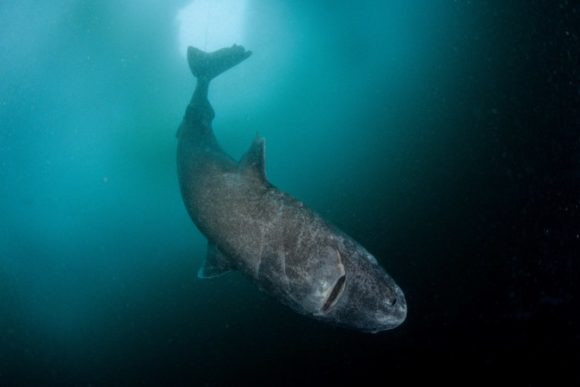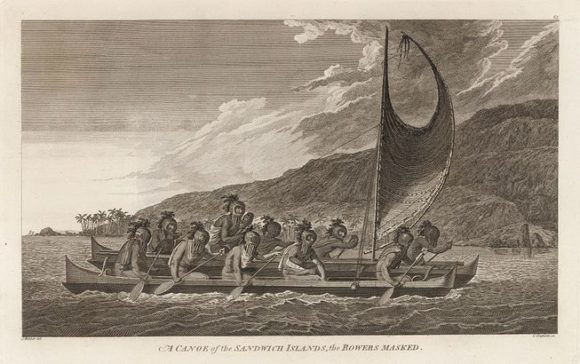Mystery of the 500-Year-Old Sharks
These rather disliked sharks seem to live a ridiculously long time. Scientist are trying to figure out what gives them this incredible longevity.

Using carbon dating and a new method involving proteins in the lens of the eye, Danish scientists have unravelled the mystery of how long Greenland sharks live.
Photograph by WaterFrame / Alamy
From The New Yorker,
The Strange and Gruesome Story of the Greenland Shark, the Longest-Living Vertebrate on Earth
By M. R. O’Connor
“Greenland sharks are among nature’s least elegant inventions. Lumpish, with stunted pectoral fins that they use for ponderously slow swimming in cold and dark Arctic waters, they have blunt snouts and gaping mouths that give them an unfortunate, dull-witted appearance. Many live with worm-like parasites that dangle repulsively from their corneas. They belong, appropriately enough, to the family Squalidae, and appear as willing to gorge on fresh halibut as on rotting polar-bear carcasses. Once widely hunted for their liver oil, today they are considered bycatch. For some fishermen, a biologist recently told me, netting a Greenland shark is about as welcome as stepping in dog poop.
And yet the species has an undeniable magnetism. It is among the world’s largest predatory sharks, growing up to eighteen feet in length, but also among its most elusive. Its life history is a black box, one that researchers have spent decades trying in vain to peer inside. Where do Greenland sharks mate? What is their global range and population structure? And, most enticing of all, how long do they live? A study begun in the nineteen-thirties suggested that the species’ lifespan might well be extraordinary, based on the slow growth rate of a single shark that a scientist was lucky enough to catch twice. Verifying this, however, proved nearly impossible. To determine age in other sharks, biologists count the growth rings on their fin spines and vertebrae. But Greenland sharks have no hard tissues in their bodies; even their vertebrae are soft. The longevity question seemed unanswerable.
The mystery might have lingered were it not for the work of three Danish scientists—a physicist named Jan Heinemeier and two marine biologists, John Fleng Steffensen and Julius Nielsen. Nine years ago, Heinemeier and four of his colleagues published a paper on lens crystallines, a class of proteins found in the human eye. Like all organic molecules, crystallines contain carbon, including trace amounts of the radioactive isotope carbon-14. Unlike other proteins, which undergo constant recycling and replenishment, crystallines remain stable throughout a person’s life; they are envelopes sealed at birth, their contents an artifact from the womb. And, if crystallines are the envelopes, then carbon-14 is the postmark. The isotope has always occurred naturally on Earth, formed wherever incoming cosmic rays strike the atmosphere, but some of the current supply also comes from nuclear-weapons tests. The level fluctuates from year to year, and that means that every given time period has its own carbon-14 signature. (There was a particularly huge spike, called the bomb pulse, in the nuke-happy heyday of the fifties and sixties.) Experimenting on cadavers’ lenses, Heinemeier found that he could measure how much carbon-14 they contained and use it to determine the deceased’s date of birth…”
For the rest, and a video of these sharks, click here.
Share

